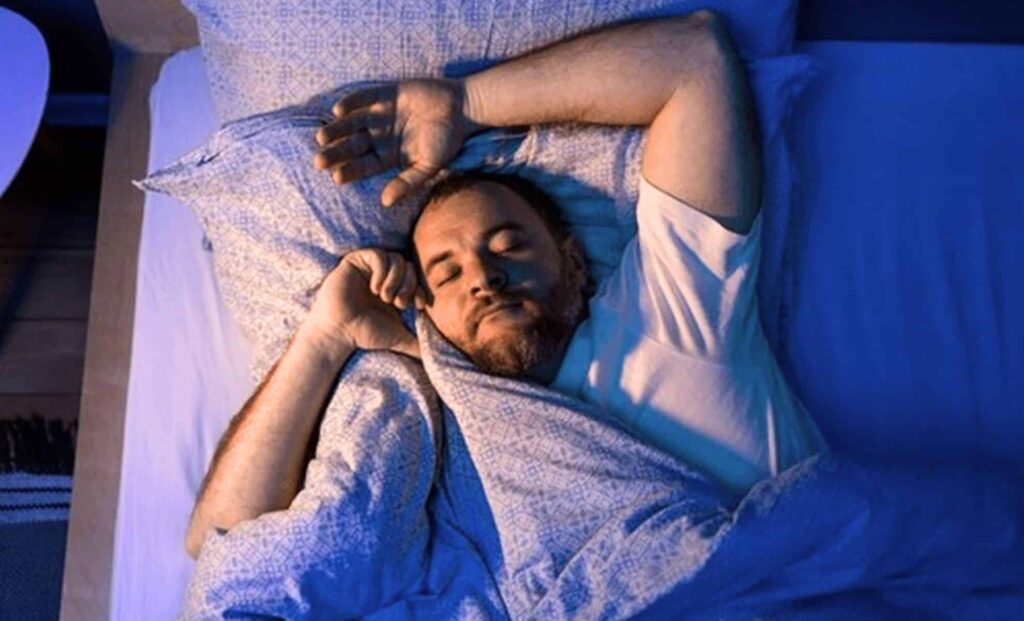Late-night brightness has become a defining feature of urban life. From blinking storefronts to LED-lit streetscapes, artificial light surrounds us after dark — a modern comfort we rarely question. But a decade-long study out of Boston is casting this glow in a new light, suggesting it may be quietly undermining heart health while we sleep.
New research presented at the American Heart Association’s Scientific Sessions 2025 links nighttime exposure to artificial light with heightened stress activity in the brain, inflamed arteries, and significantly increased cardiovascular risk. This emerging connection between environmental light and heart disease isn’t just theoretical — it’s been measured, tracked, and mapped at an individual level.

Scientists followed hundreds of adults for over ten years, combining satellite data on light exposure with advanced PET/CT scans to assess brain and artery function. They found a clear pattern: the brighter the nighttime light around a person’s home, the more their brain activated stress pathways known to fuel cardiovascular damage. For people living in high-noise or economically disadvantaged neighborhoods, the risks were even higher.
This isn’t about sleeping under floodlights. Even low levels of ambient light — like the soft glow from a streetlamp or neon sign — were enough to trigger biological responses typically associated with long-term heart disease risk. And most of us are exposed every night.
Chronic Exposure, Real Cardiovascular Consequences
The research, led by Dr. Shady Abohashem of Massachusetts General Hospital and Harvard Medical School, analyzed 466 adults with no prior heart disease or cancer. Using PET/CT imaging, the team measured two key indicators of cardiovascular risk: stress-related brain activity and arterial inflammation.
To estimate nighttime light exposure, the team relied on data from the Suomi NPP satellite, which uses the Visible Infrared Imaging Radiometer Suite (VIIRS) to detect ground-level artificial light, excluding natural sources like the moon or stars.
Their results were stark. Each standard deviation increase in nighttime light was associated with:
- 35% higher risk of major heart events over five years
- 22% higher risk over a ten-year period
By the end of the follow-up, 17% of participants had experienced a serious cardiovascular event.


“We found a nearly linear relationship between nighttime light and heart disease,” Abohashem said during the official AHA press release. “Even modest increases in night-time light were linked with higher brain and artery stress.”
These stress signals are more than theoretical. When activated repeatedly, they can spark immune responses that cause chronic inflammation, harden arteries, and set the stage for heart attacks or strokes.
Light Pollution Joins a Growing List of Urban Health Threats
The findings come as attention turns to how environmental factors — beyond diet and exercise — shape long-term heart health. While air pollution and noise have long been recognized, light has remained under the radar. That may be changing.
A 2025 scientific statement from the American Heart Association outlines a framework for multidimensional sleep health, emphasizing not only how long we sleep, but when, how consistently — and under what conditions. Artificial light, even at low intensity, disrupts the body’s circadian rhythm, delays melatonin release, and impairs sleep quality — all of which have established links to cardiovascular risk.


The AHA statement identifies light pollution as a factor that “can suppress melatonin, delay sleep onset and even at low levels has been associated with increased risk of cardiovascular disease.”
The Boston study’s strength lies in its methodological design. Unlike many sleep studies that rely on self-reporting, this one used hard imaging data and satellite readings — a fusion of cardiology, neurology, and geospatial science rarely seen in this field.
Still, the research has limitations. It was observational and included a largely homogenous population drawn from a single healthcare system, so findings may not generalize broadly. The study has not yet been peer-reviewed, though it has been vetted and presented at a major cardiology conference.
The Compounding Effect of Social Stressors
Not all neighborhoods face the same level of risk. Participants living in areas with more traffic noise or lower household incomes experienced a stronger link between artificial light and cardiovascular stress markers.
This layered exposure mirrors broader health disparities. Residents in denser, under-resourced urban areas are often subject to more ambient noise, weaker insulation, and limited control over light pollution from nearby buildings or infrastructure.
The researchers underscore that light exposure is “modifiable” — unlike many genetic or structural health risks. But addressing it will require more than better curtains. It will take policy-level interventions in urban design, energy regulation, and housing standards.
City governments could implement shielded street lighting, enforce curfews on commercial signage, or adopt motion-sensitive lighting systems that reduce unnecessary illumination.

